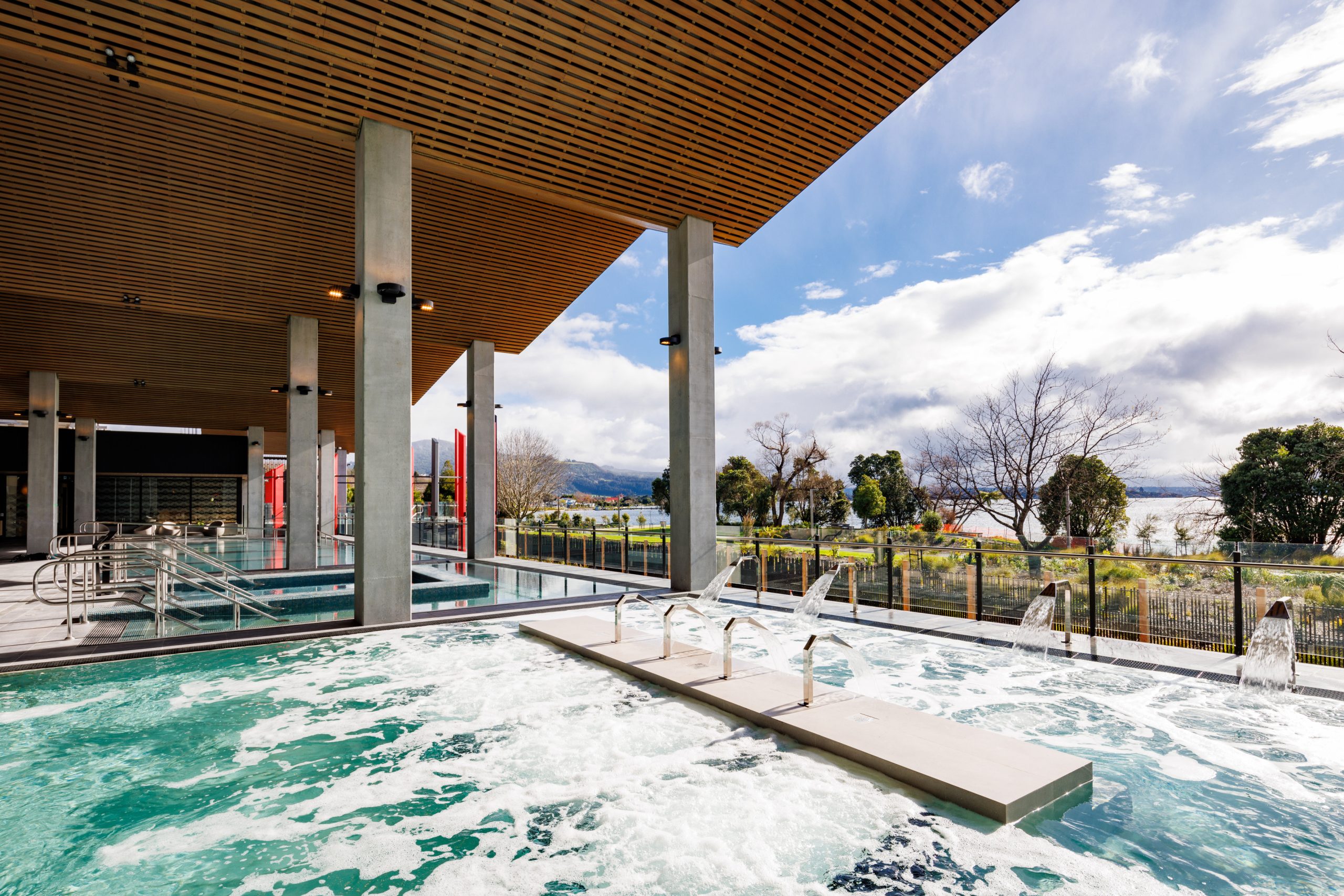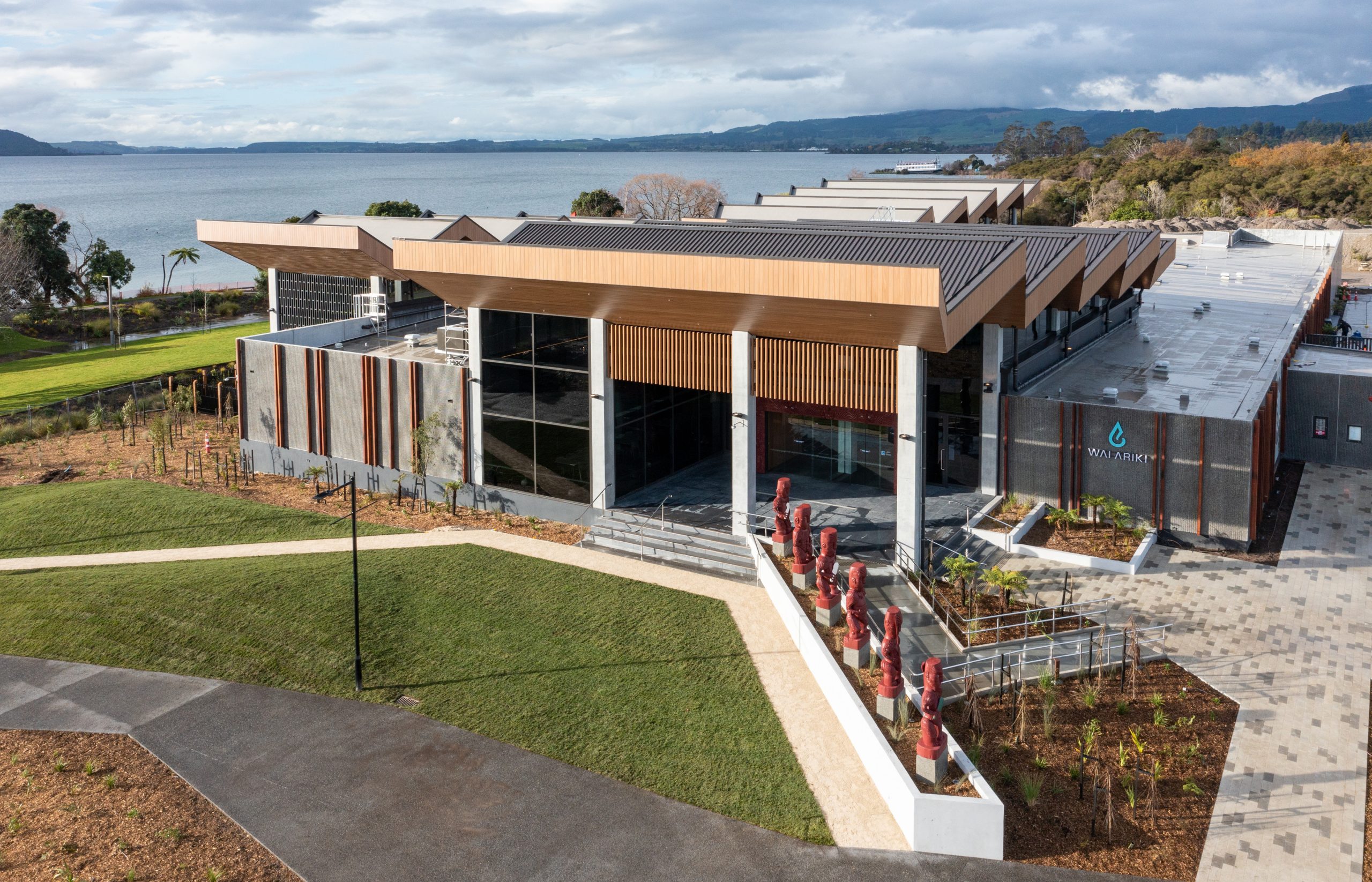Hawkins has a long relationship with this Client, and were approached to assist in building this bespoke wellness facility on the shores of Lake Rotorua.
Hawkins were engaged on an ECI and VE basis to assist in scope definition and material selection. Early engagement meant that the required materials could be procured early. Some of these were very high end and came from overseas; tiles and baths from Italy, lights and wallpaper from America. A large temporary tent was set up to store and protect timber doors and Gib-board that was procured early. Early procurement helped to avoid long lead times and cost escalation.
The project was highly complex with heavy involvement of services engineers due to the pools, geothermal plant, lighting and Digital Addressable Lighting Interface (DALI) system.
Detailed planning was needed for this project. Frequent design and coordination meetings with consultants and Client were held to ensure that queries were dealt with promptly. The build was highly collaborative, with a high level of coordination with pool suppliers and installers (including specialist installers from Italy).
The high-end materials used throughout required thorough planning, detailed shop drawings and materials schedules which were scrutinised before purchasing descisions were made. The Client also supplied bespoke carvings and asked that these be installed on their behalf.
The presence of hydrogen sulphide gas as part of Rotorua’s geothermal environment required the installation of a gas mat underneath the concrete floor slab, and specialist concrete to be used for the slab. The potential for high levels of hydrogen sulphide during construction meant that gas levels were monitored constantly.
Challenges on site included very wet winters (one being the wettest on record for Rotorua), and COVID-19 delays, in obtaining pre-cast panels and columns from Auckland. Hawkins re-thought the methodology and construction was able to continue in other areas so as not to affect the programme.
Innovations including bulding one of the roof sections on the ground to minimise work from height. The roof section was then lifted into place using a 300 tonne crane.
Hawkins partnered with Ngāti Whakaue to hold two open days at the Te Arawa Marae to promote the construction industry to local Māori. Guest contractors provided insight into the industry, while Q&A sessions allowed for questions to be answered. Hawkins utilised local subcontractors on-site – at one time there were 15 Ngāti Whakaue descendants working on-site.







